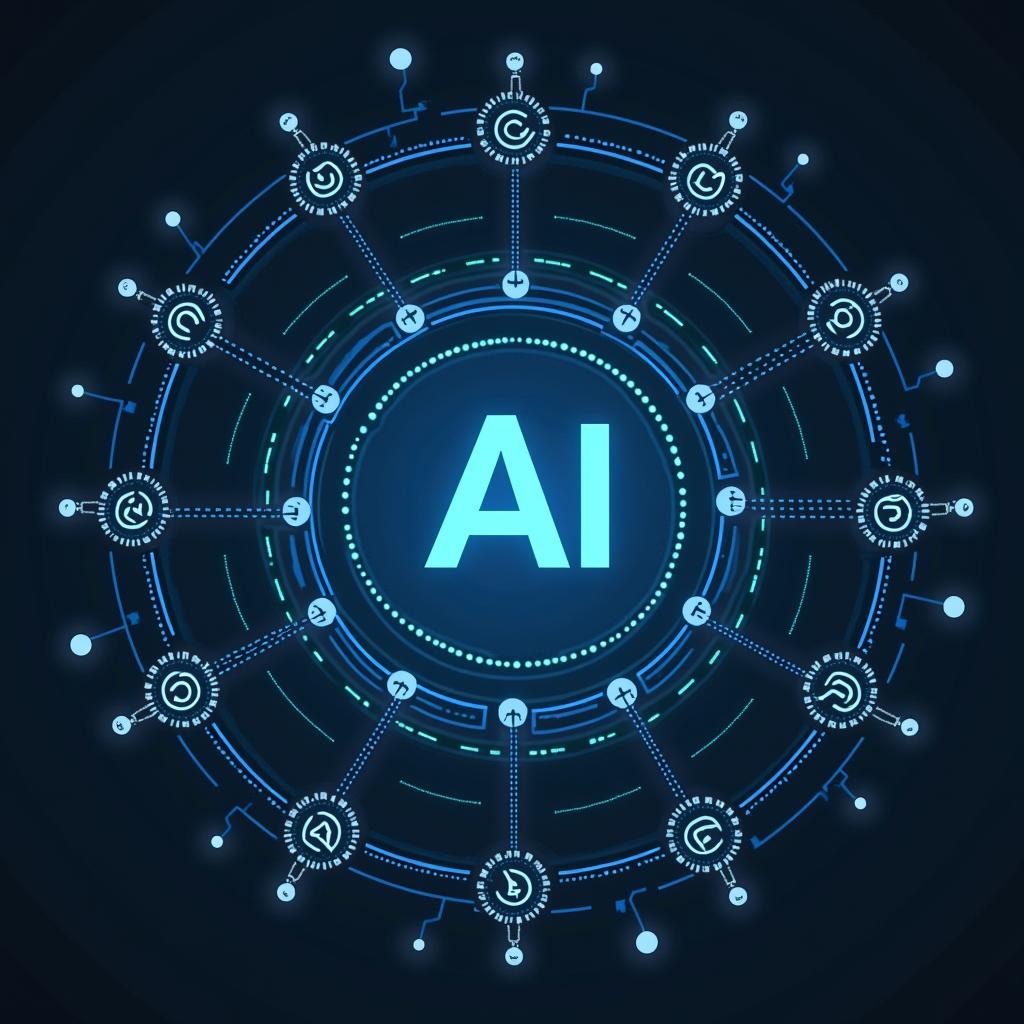
Artificial Intelligence (AI) is revolutionizing industries with the power to analyze, predict, and optimize. But at its core, the networks that enable AI to function effectively are just as vital. Let’s dive into the AI network technologies shaping tomorrow’s breakthroughs.
Neural Networks: The Backbone of Modern AI
What Are Neural Networks?
Neural networks mimic the human brain, processing data through interconnected nodes. These systems excel at recognizing patterns, making them ideal for image recognition, natural language processing, and even complex decision-making.
Types of Neural Networks Revolutionizing AI
- Convolutional Neural Networks (CNNs): Perfect for image and video analysis.
- Recurrent Neural Networks (RNNs): Specialize in sequential data like time series or text.
- Transformer Models: Powerhouses behind natural language models like GPT and BERT.
Why They’re Essential
Neural networks are the reason AI can “learn.” By training on vast datasets, they improve accuracy over time, enabling applications in healthcare, finance, and beyond.
Edge AI: Bringing Intelligence Closer to the Source
What Is Edge AI?
Unlike traditional AI, which relies on cloud processing, Edge AI processes data locally. Devices like smartphones, drones, and IoT gadgets use this technology.
Benefits of Edge AI
- Low Latency: Faster response times without cloud reliance.
- Enhanced Privacy: Local data processing ensures better security.
- Energy Efficiency: Minimizes bandwidth use and power consumption.
Use Cases to Watch
From autonomous vehicles to smart home systems, Edge AI is reshaping how we interact with technology in real-time.
Quantum AI: Unlocking Unprecedented Computational Power

What Makes Quantum AI Unique?
Quantum computing operates on quantum bits, or qubits, which can exist in multiple states simultaneously. This ability allows quantum AI to solve complex problems far faster than classical systems.
Applications Pushing Boundaries
- Drug Discovery: Modeling molecular interactions at an atomic level.
- Financial Optimization: Tackling complex algorithms for better trading strategies.
- Climate Predictions: Enhancing models for more accurate forecasting.
Challenges Ahead
Quantum AI is still in its infancy. However, investments by Google, IBM, and startups signal its potential to disrupt AI innovation.
5G Networks: Fueling Real-Time AI Applications
How Does 5G Boost AI?
5G technology provides ultra-fast internet speeds and low latency, enabling AI applications that rely on instantaneous data processing.
Transformative AI-Driven Use Cases
- Remote Surgery: AI-powered robotic systems can assist surgeons across continents.
- Smart Cities: Real-time monitoring of traffic and energy systems.
- Augmented Reality (AR): Seamless AR experiences for education and gaming.
Future-Proofing Connectivity
As AI systems demand more data, 5G ensures reliable and scalable infrastructure to meet these needs.
Federated Learning: Collaborative AI Without Centralization
The Concept Behind Federated Learning
This technique allows AI models to learn from decentralized data sources, keeping sensitive information on individual devices.
Key Advantages
- Privacy Preservation: Data never leaves the user’s device.
- Improved Efficiency: Updates happen locally, reducing central server loads.
- Global Collaboration: Multiple organizations can train shared models without revealing proprietary data.
Where It’s Making Waves
From healthcare to smartphones, federated learning supports data-rich yet privacy-sensitive sectors.
Reinforcement Learning: Mastering Complex Decision-Making
What Is Reinforcement Learning (RL)?
Reinforcement learning is an AI training method where systems learn by trial and error. Instead of relying solely on pre-labeled data, RL agents interact with their environment and adjust based on rewards or penalties.
Breakthrough Applications
- Robotics: Teaching robots to adapt to dynamic environments.
- Game Development: RL-powered systems that beat human players in complex games like chess and Go.
- Supply Chain Optimization: Automating logistics for faster and cost-effective deliveries.
Why It Matters
The adaptability of RL enables machines to handle scenarios beyond rigid programming, making it critical for industries like transportation and healthcare.
Blockchain-Enabled AI Networks: Enhancing Security and Trust
The Fusion of Blockchain and AI

Blockchain technology adds a layer of transparency and security to AI processes. By decentralizing data storage and processing, it combats issues like bias and manipulation in AI models.
How Blockchain Improves AI Networks
- Data Integrity: Ensures datasets remain tamper-proof.
- Decentralization: Removes single points of failure.
- Auditability: Tracks AI decision-making for regulatory compliance.
Promising Fields for Blockchain-AI Integration
From securing IoT networks to authenticating medical records, the combination of these technologies is redefining trust in digital ecosystems.
AI-Driven Software-Defined Networking (SDN)
What Is SDN in AI?
SDN is a network management approach where control is decoupled from hardware, allowing AI to dynamically adjust network configurations in real-time.
Benefits of AI-Powered SDN
- Automated Traffic Optimization: Adapts to changing demands.
- Enhanced Network Security: Identifies and mitigates threats instantly.
- Scalability: Easily supports growing AI workloads.
Emerging Use Cases
Cloud computing, telecommunication, and enterprise IT are already benefiting from AI-SDN to maintain high-performance networks.
AIoT: The Convergence of AI and IoT
What Is AIoT?
AIoT (Artificial Intelligence of Things) combines AI with IoT devices to enable smart decision-making at the edge. While IoT collects and transmits data, AI analyzes and acts on it, creating more efficient systems.
Real-World Implementations
- Smart Homes: AI-powered thermostats and lighting systems.
- Predictive Maintenance: Equipment that predicts and resolves issues before failure.
- Environmental Monitoring: Sensors equipped with AI to track and address climate challenges.
Transformational Impact
AIoT enhances automation, efficiency, and intelligence across sectors, from manufacturing to environmental science.
Natural Language Processing (NLP): Transforming Communication
The Role of NLP in AI Networks
NLP enables machines to understand, interpret, and respond to human language. Advanced models like ChatGPT and OpenAI Codex rely on this technology to deliver accurate and intuitive results.
Where NLP Shines
- Customer Service: AI chatbots provide instant, personalized support.
- Content Creation: Tools that write, summarize, or translate with human-like accuracy.
- Healthcare: Assisting doctors by summarizing patient records and research.
Bridging Human-Machine Interaction
With improvements in context understanding, NLP is at the heart of making AI more accessible and user-friendly.
Autonomous AI Networks: Learning Without Human Intervention
What Are Autonomous AI Networks?
These self-managing networks use AI to detect, analyze, and resolve issues without human oversight. Combining machine learning and real-time analytics, these networks ensure peak performance.
Key Features of Autonomous AI Networks
- Self-Healing: Automatically detects and resolves network failures.
- Predictive Maintenance: Identifies potential issues before they occur.
- Scalable Performance: Dynamically adjusts resources to meet demand.
Use Cases Shaping the Future
From cloud services to telecom providers, autonomous networks minimize downtime and improve operational efficiency in complex environments.
AI-Powered Cybersecurity Networks: Protecting Digital Frontiers
The Role of AI in Cybersecurity
AI-driven cybersecurity solutions are revolutionizing how threats are detected and neutralized. By analyzing patterns, they can predict and block attacks before they materialize.
Innovations in AI Cybersecurity
- Behavioral Analysis: Spotting unusual user or device activity.
- Threat Intelligence: Real-time analysis of malware and phishing attempts.
- Incident Response: Automated responses to neutralize threats quickly.
Industries Adopting AI Cybersecurity
Financial institutions, healthcare providers, and governments rely heavily on these systems to safeguard sensitive data and infrastructure.
AI Integration with Cloud Computing: Scaling Intelligence
How Cloud Computing Boosts AI
Cloud platforms like AWS, Azure, and Google Cloud provide the infrastructure to train and deploy AI models on a global scale.
Advantages of AI-Cloud Integration
- On-Demand Scalability: Access to powerful resources without upfront hardware investments.
- Global Collaboration: Enables teams worldwide to work on AI projects seamlessly.
- Cost Efficiency: Pay-as-you-go models reduce operational expenses.
Transforming Businesses
From startups to Fortune 500 companies, cloud-based AI solutions are leveling the playing field for innovation.
AI-Powered Optical Networks: Speed Meets Intelligence
What Are Optical Networks?
Optical networks transmit data via light, offering faster speeds and higher bandwidth than traditional methods. When combined with AI, they become even more efficient.
AI’s Impact on Optical Networking
- Dynamic Routing: AI optimizes data flow based on network conditions.
- Fault Detection: Predicting and resolving issues to minimize downtime.
- Energy Savings: Enhances efficiency by adjusting power based on usage.
Pioneering Fields
AI-powered optical networks are crucial for sectors requiring massive data transfer, such as scientific research and media production.
Collaborative AI Networks: Building Smarter Systems Together
What Are Collaborative AI Networks?
These systems connect multiple AI models to work together seamlessly. Think of it as an AI team where each member specializes in a specific task.
Benefits of Collaboration
- Specialized Expertise: Each AI focuses on its strengths.
- Faster Problem Solving: Teams of AIs share insights in real-time.
- Scalable Solutions: Combines resources for large-scale challenges.
Examples in Action
Collaborative AI is being used in autonomous vehicles, where one model handles navigation while another manages safety. It’s also vital in smart factories, where various AI systems coordinate production lines.
Conclusion
The future of innovation is inseparable from AI network technologies. From neural networks powering intelligence to quantum AI redefining possibilities, each of these technologies plays a unique role in reshaping industries. As these advancements grow, they promise a more connected, efficient, and intelligent world.
Ready to embrace the future? Dive into these technologies and prepare to innovate!
FAQs without numbering & q in h3. Enhance with examples if they are meaningful.
Resources
- Neural Networks and Deep Learning
Explore Michael Nielsen’s free online book for an in-depth guide to understanding neural networks.
neuralnetworksanddeeplearning.com - Edge AI and IoT Solutions
Dive into Intel’s white papers on Edge AI to understand its role in real-world applications.
intel.com/edge - Quantum Computing for AI
IBM provides an accessible introduction to quantum computing and its potential in AI.
research.ibm.com/quantum - 5G and AI Integration
Ericsson’s reports detail how 5G networks are revolutionizing AI-driven industries.
ericsson.com/5g - Federated Learning Explained
Google AI’s blog offers insights into federated learning applications in privacy-sensitive industries.
ai.googleblog.com/federated-learning - Reinforcement Learning Resources
OpenAI’s Gym platform is perfect for learning and experimenting with reinforcement learning techniques.
gym.openai.com - Blockchain and AI Synergy
Read Deloitte’s detailed analysis of blockchain’s role in enhancing AI security and trust.
deloitte.com/blockchain-ai - AIoT Use Cases
McKinsey’s reports highlight AIoT applications in manufacturing, agriculture, and healthcare.
mckinsey.com/aiot - AI-Powered Optical Networking
Cisco’s resources explain how AI is reshaping optical networks for enterprises and telecommunications.
cisco.com/optical-ai
These resources offer valuable insights, tutorials, and case studies to deepen your understanding of AI network technologies.